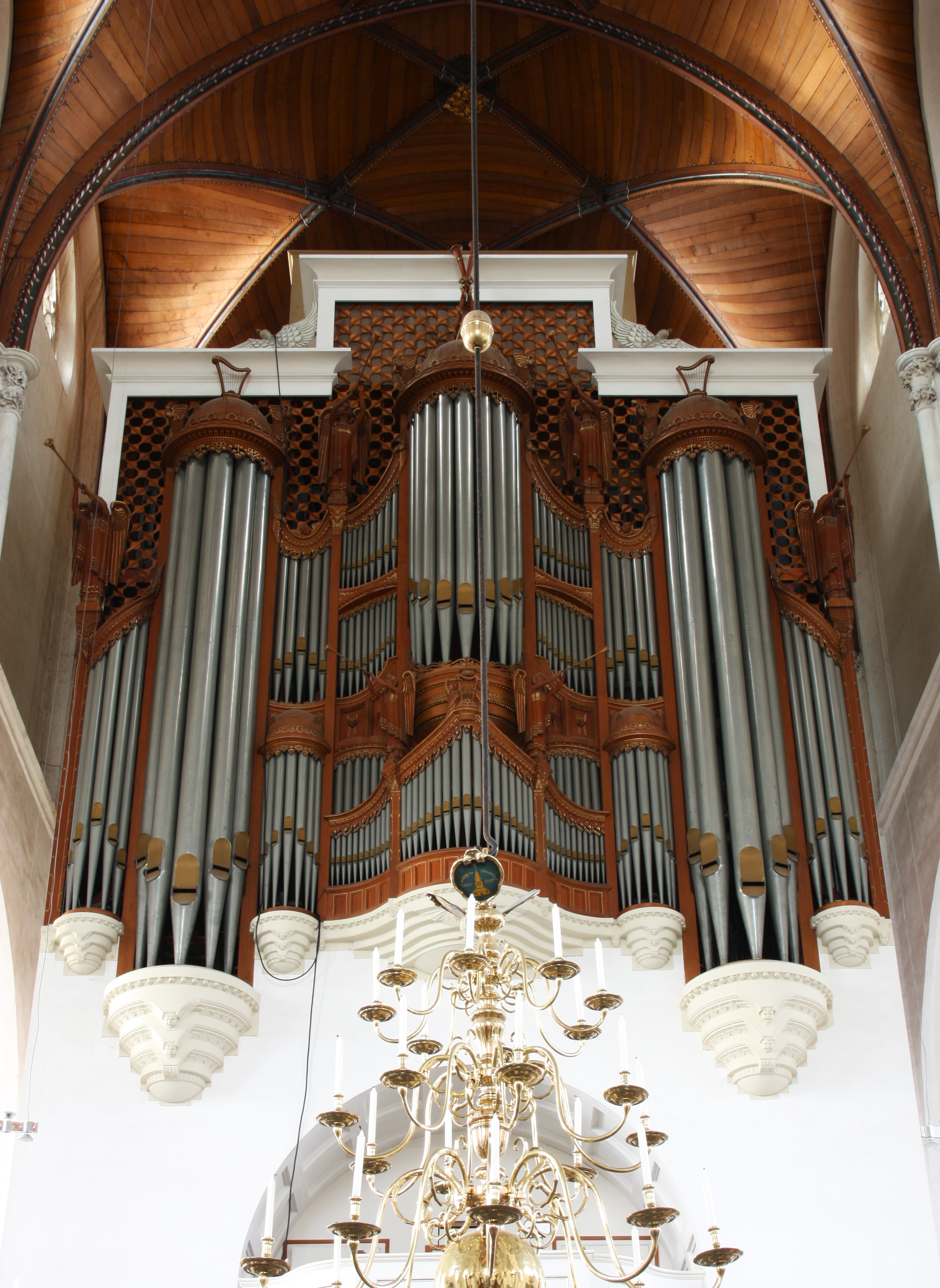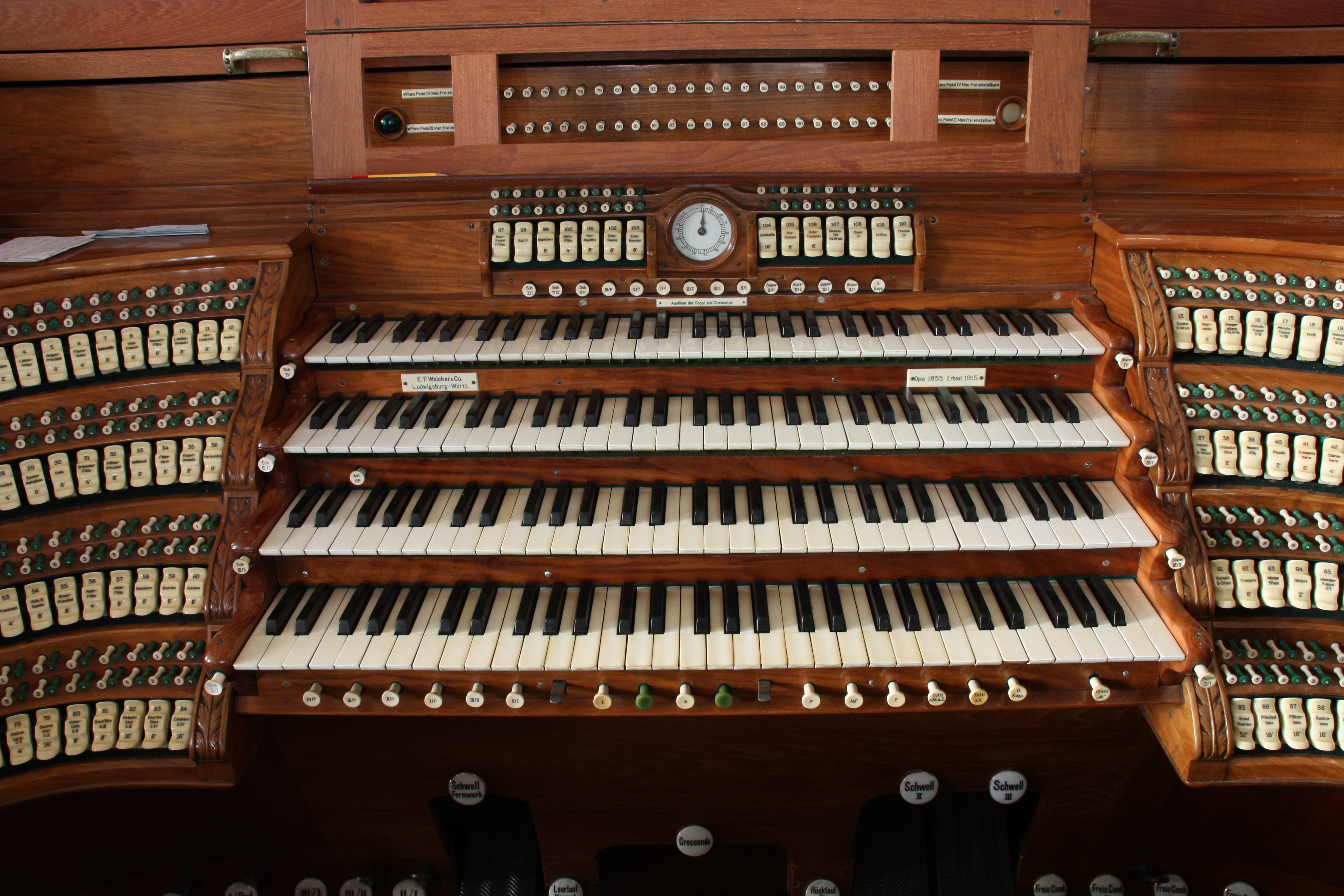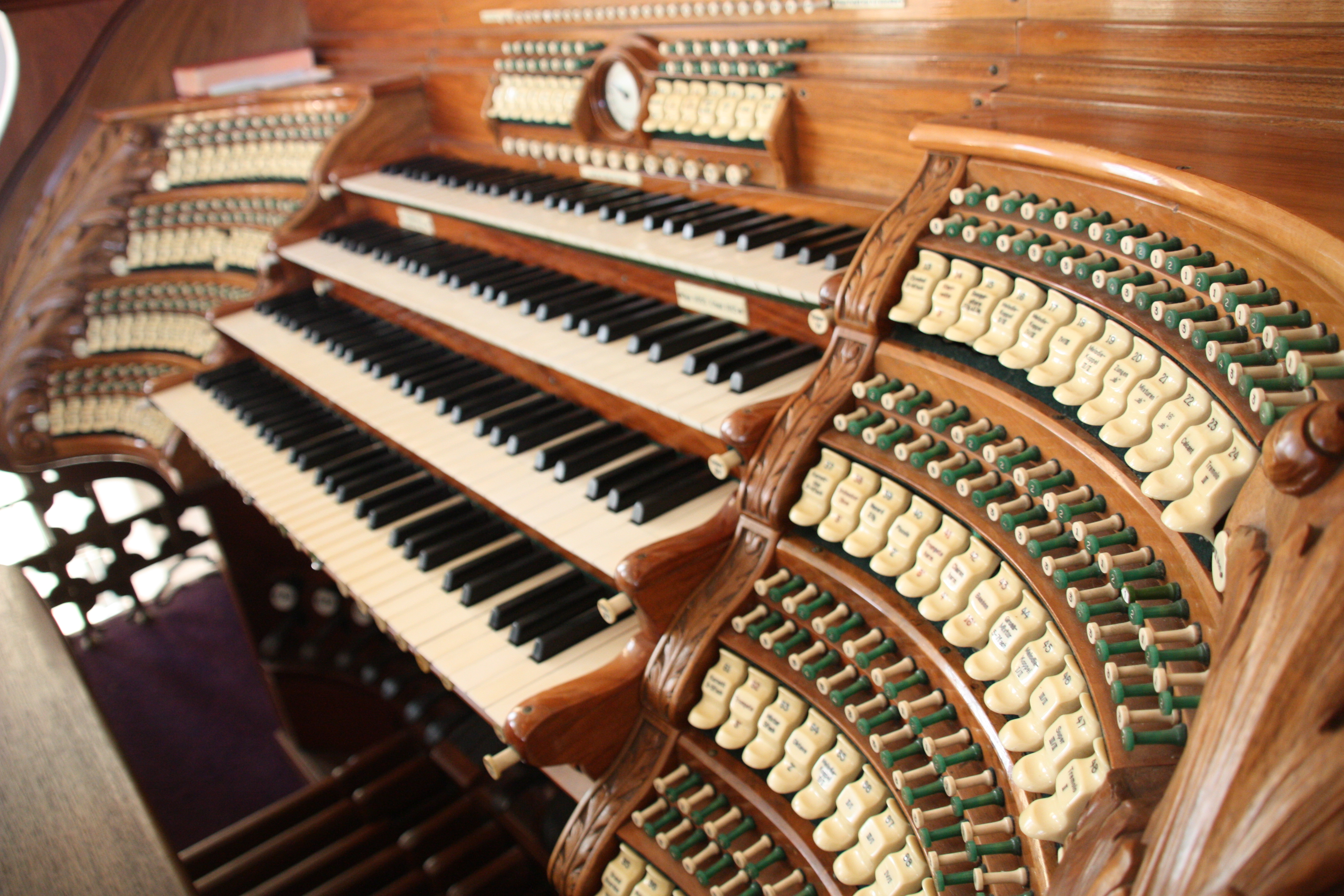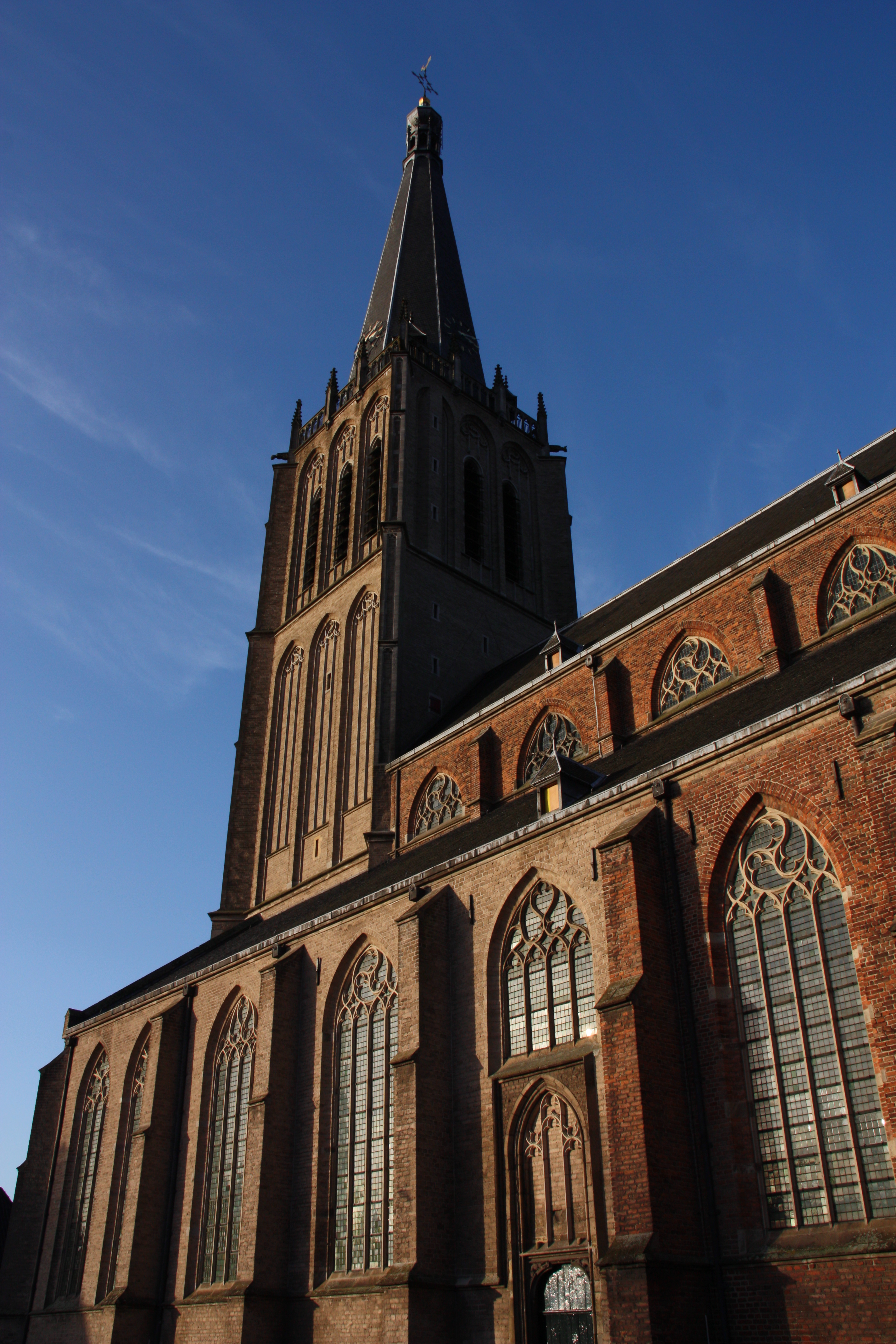Doesburg, Martinikerk (Main Organ)
| Builder | Walcker |
|---|---|
| Year | ca. 1916 |
| Period/Style | Romantic |
| Stops | 75 |
| Keyboards | 4+P |
| Keyaction | pneumatic |
| Tuning | Equal at 430.0 Hz |
| Sampleset |
Available
 , sampled by
Sonus Paradisi
, sampled by
Sonus Paradisi
|
The great four manual organ of Oscar Walcker was built as his opus 1855 for the church Nieuwe Zuiderkerk in Rotterdam in 1914-1916. The construction of the church and the organ was sponsored by brothers Bos who were organists themselves and who had certain predilection for the organbuilding techniques represented by the lastest achievements of German organbuilders. For this reason, the modern organ with an electro-pneumatic action was commissioned to the Walcker and Co. When the church had been demolished in 1968, the organ was sold to the Doesburg parish and transferred to the Martinikerk. This church lost its own organ during the bombardment of the 2nd World War when its spire was destroyed. Although different (neobaroque) organ fashion was governing at that time, the authorities of the church made the fortunate decision to acquire the Walcker organ which is now pride of the town and a true historical monument, because there are only few large Walcker organs preserved without major rebuilding.
The organs of the Walcker company bear many characteristics which we usually call "romantic" today: predominance of 8' stops carefully selected to provide the widest possible differeciation of the sound color as well as smooth dymanic layering, absence of aliquotes, lower number of reeds,use of darker mixtures, the contrast between the division based on dynamics rather than on timbre, tracker allowing comfortable and light touch and virtuoso playing technique, plenitude of couplers and other playing aids.
Nevertheless, the opus 1855 exhibits also the influence of the Alsace organ reform after Emil Rupp. The elements of this sound concept were: more reeds in the French fashion after Cavaillé-Coll, large swell divisions (there are three swell boxes available), brighter mixtures and cornets after Silbermann - the builder proudly engraved the name of the Freiberg master to the largest pipes of the stops made according to the Silbermann scales. An extraordinary feature of the organ which brings the idea of brighter sound color further is the treble rank extensions. Although the compass of manuals is already large - five full octaves, there is a sixth treble octave available for many stops and comes into use when the octave coupler is engaged.
Originally, the organ had an echo division positioned above the vault of the Rotterdam church while the sound was driven through 22 meters long channel into the church nave. This feature was not rebuilt in Doesburg, but the echo division is not lost. It is now seated on top of the organ case in a swell box.
The organ allows historically accurate reproduction of the organ music written during the Romantism and later.
The organs of the Walcker company bear many characteristics which we usually call "romantic" today: predominance of 8' stops carefully selected to provide the widest possible differeciation of the sound color as well as smooth dymanic layering, absence of aliquotes, lower number of reeds,use of darker mixtures, the contrast between the division based on dynamics rather than on timbre, tracker allowing comfortable and light touch and virtuoso playing technique, plenitude of couplers and other playing aids.
Nevertheless, the opus 1855 exhibits also the influence of the Alsace organ reform after Emil Rupp. The elements of this sound concept were: more reeds in the French fashion after Cavaillé-Coll, large swell divisions (there are three swell boxes available), brighter mixtures and cornets after Silbermann - the builder proudly engraved the name of the Freiberg master to the largest pipes of the stops made according to the Silbermann scales. An extraordinary feature of the organ which brings the idea of brighter sound color further is the treble rank extensions. Although the compass of manuals is already large - five full octaves, there is a sixth treble octave available for many stops and comes into use when the octave coupler is engaged.
Originally, the organ had an echo division positioned above the vault of the Rotterdam church while the sound was driven through 22 meters long channel into the church nave. This feature was not rebuilt in Doesburg, but the echo division is not lost. It is now seated on top of the organ case in a swell box.
The organ allows historically accurate reproduction of the organ music written during the Romantism and later.
| I. Hauptwerk | II. Positiv | III. Schwellwerk | IV. Echowerk | Pedal |
|---|---|---|---|---|
| Prinzipal 16′ | Bourdon 16′ | Liebl. Gedeckt 16′ | Quintatön 16′ | Grand Bourdon 32′ |
| Gross Prinzipal 8′ | Flötenprinzipal 8′ | Geigenprinzipal 8′ | Nachthorn 8′ | Prinzipalbass 16′ |
| Bourdon 8′ | Synthematophon 8′ | Liebl. Gedeckt 8′ | Echo Bourdon 8′ | Subbass 16′ |
| Viola di Gamba 8′ | Doppelgedeckt 8′ | Konzertflöte 8′ | Echo Gamba 8′ | Harmonikabass 16′ |
| Jubalflöte 8′ | Flûte harmonique 8′ | Quintatön 8′ | Vox Angelica 8′ | Contrabass 16′ (Tr. I.) |
| Gemshorn 8′ | Salicional 8′ | Viola d'amour 8′ | Spitzflöte 4′ | Flötenbass 16′ |
| Dulciana 8′ | Cello 8′ | Aeoline 8′ | Glockenton III–IV | Quintbass 10 2⁄3′ |
| Praestant 4′ | Harmonika 8′ | Voix Céleste 8′ | Vox Humana 8′ | Octavebass 8′ |
| Rohrflöte 4′ | Prinzipal 4′ | Liebes Geige 4′ | Echo Trompete 8′ | Flötenbass 8′ (Tr. I.) |
| Octave 2′ | Orchesterflöte 4′ | Flauto dolce 4′ | Choralbass 4′ | |
| Cornet III–V | Nazard 2 2⁄3′ | Sesquialtera II 2 2⁄3′ | Mixtur V (Tr. I.) | |
| Mixtur V | Piccolo 2′ | Flautino 2′ | Bombardon 32′ | |
| Trompete 8′ | Cornettino III–IV | Cymbel III–IV | Posaune 16′ | |
| Gross Mixtur V–VII | Clarinette 8′ | Tuba 8′ | ||
| Basson 16′ | Gedecktbass 16′ (Tr. III) | |||
| Trompette harm. 8′ | Echobass 16′ (Tr. IV) | |||
| Orchester Oboe 8′ | Bourdon doux 8′ (Tr. IV) | |||
| Clairon harm. 4′ | Bassflöte 8′ (Tr. III) | |||
| Violoncello 8′ (Tr. II) | ||||
| Bassonbass 16′ (Tr. II) | ||||
| Clairon harm. 4′ (Tr. II) |
1607623479-Reger-Toccata-Fuge-op59-Doesburg2
0:00
0:00
1608075494-Mendelssohn - Preludium in c
0:00
0:00
1608069450-R-Schumann Skizzen n-4 Doesburg Surr
0:00
0:00
1608101452-C. Saint-Sae ns Fantasy n.3 op.157
0:00
0:00
https://organindex.de/index.php?title=Doesburg,_Martinikerk_(Hauptorgel)
https://www.sonusparadisi.cz/en/organs/netherlands/doesburg-martinikerk-walcker-organ.html
https://www.sonusparadisi.cz/en/organs/netherlands/doesburg-martinikerk-walcker-organ.html
 Pipe Organ Map
Pipe Organ Map



